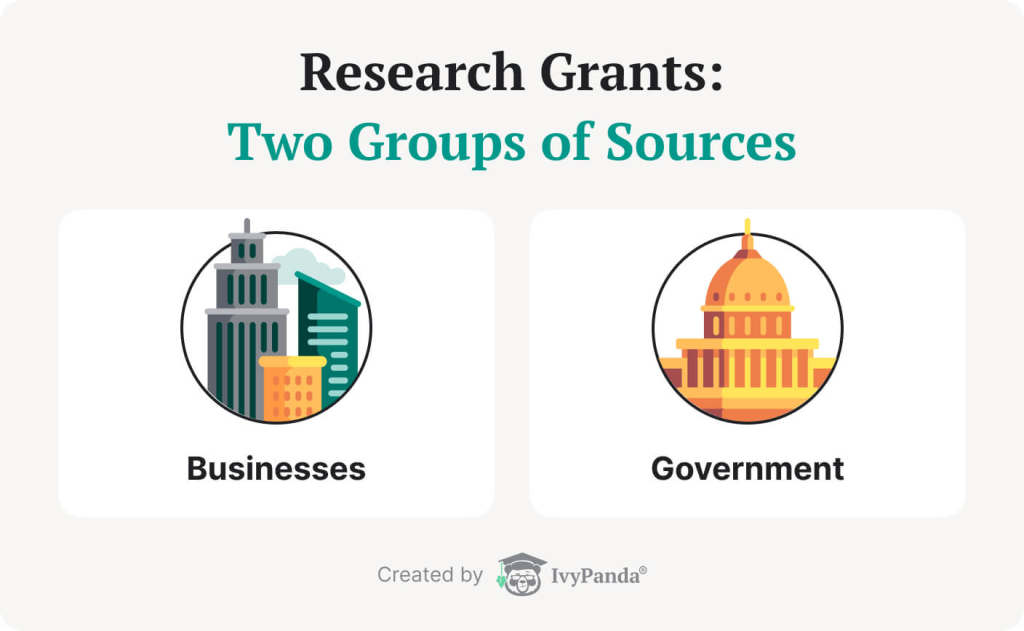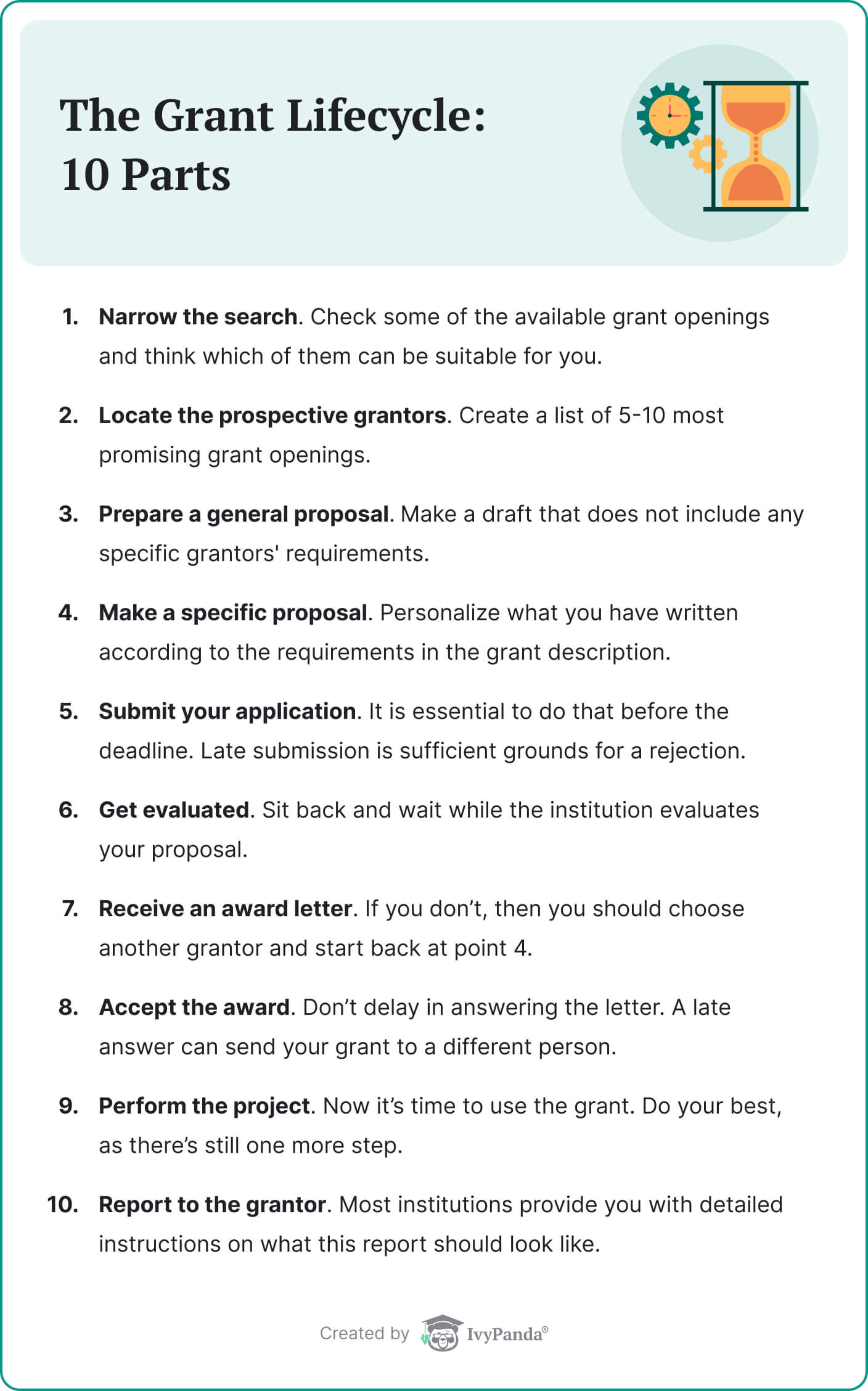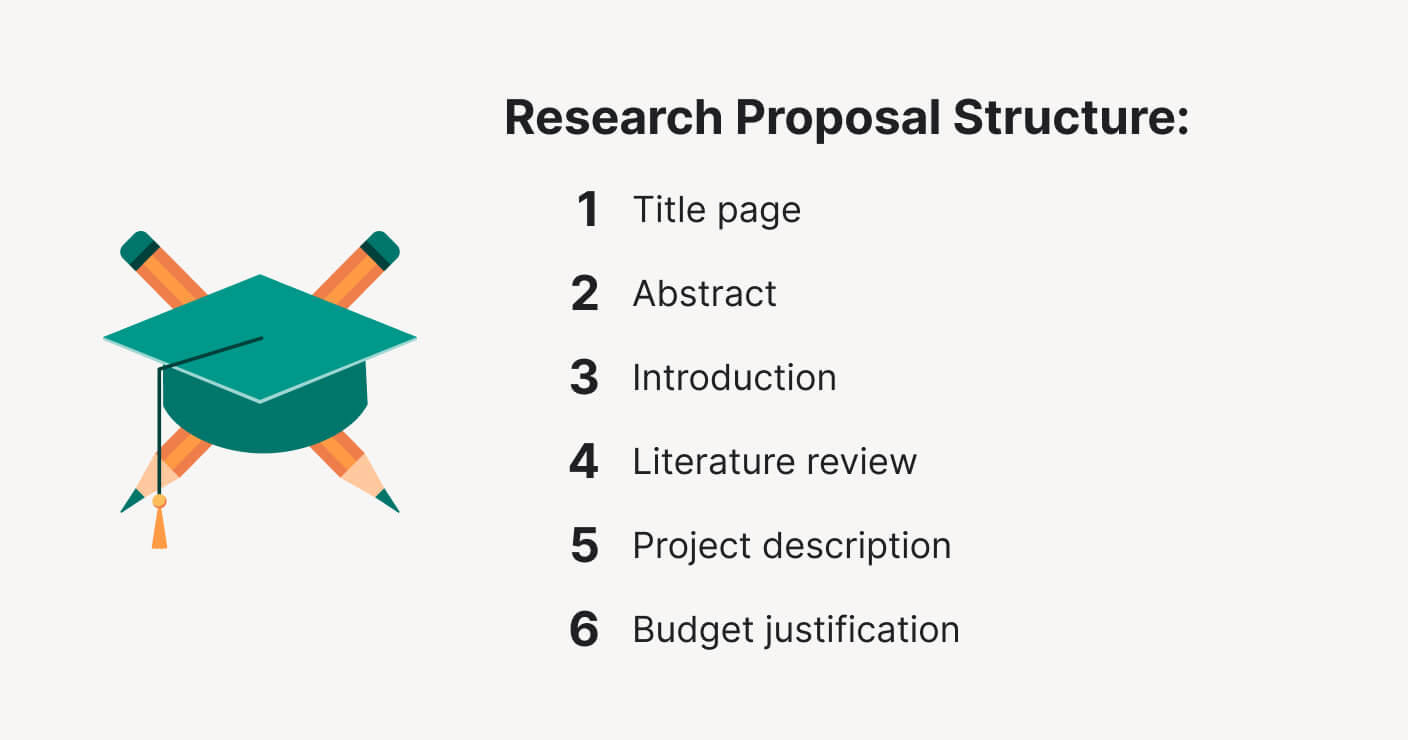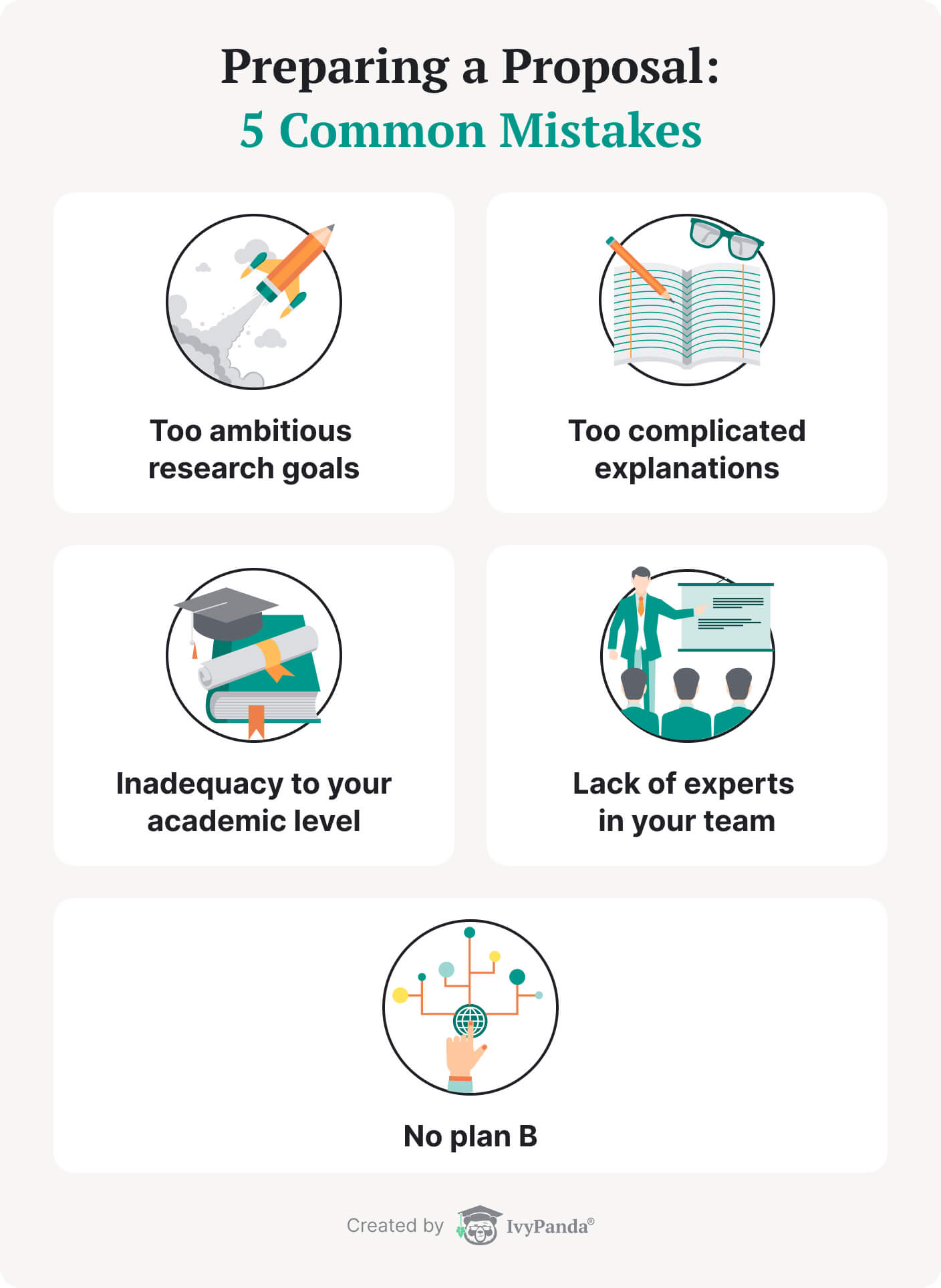The fact that you are interested in this article tells a lot about you as a person. You are an intelligent student who dreams about pursuing a research career. You love to read and analyze information. Even more than that, you adore debating with your peers about abstract concepts. You would gladly spend a lifetime researching your sphere of interest. However, there’s one big “but” – money. Our world would be a much better place if young scientists did not have to search for a source of income to support themselves. Unfortunately, that is not the case.
Let us be frank. You cannot work part-time and be a full-time researcher. Moreover, it is nearly impossible to make enough money to live on while studying for your Ph.D. course. The question is, then, how can you find funding for research projects?
This article will help you become a successful researcher. We have made a comprehensive guide to getting research funding, added 7 useful tips and 5 common mistakes made even by experienced grantees. We have also collected 39 resources for finding grant opportunities and sorted them by research areas.
Thanks to these materials, we are certain that we will hear about your breakthrough discovery in the news one day.
❓ What Is a Research Grant?
Research grants are monetary funds provided by various institutions to support or fund research projects by universities, individuals, or scientific groups. Some of the funders are private companies, and others are large international organizations.
The amounts of money they offer range from small one-time awards to multi-year fellowships covering all the research and living expenses of the people involved.
All funding sources in the US come from two large groups. The first one comprises all governmental and non-profit organizations, and the second includes for-profit businesses.

No matter which grant you apply for, the following criteria define your success:
- Did you meet all the application form requirements?
- Is your research proposal interesting to the funding organization?
♻️ The Grant Lifecycle: 10 Parts
The grant lifecycle consists of ten parts. The first five are your responsibility, and the last five are completed by the awarding entity or at least partly depend on it.

- Narrow the search. If you have already checked the available grant openings, you know that the options are almost endless. But, very often, very few apply to your particular situation. Answering the following questions will save you time down the road.
- Will you be doing pilot research, a dissertation, post-doctoral research, or experimental fieldwork?
- What is the planned result of your work (a publication, a book, etc.)?
- How long will your work last?
- How will you distribute the grant money?
- Locate the prospective grantors. Please check the final section of this article for all sorts of information on this point.
- Prepare a general proposal and calculate the financial needs. A general proposal is a draft that contains all the basic information about your research, but does not include any specific grantors’ requirements. We could write a whole article on this issue, but as an overview, Przeworski and Salomon recommend that you answer the following questions:
- What kind of knowledge do you plan to obtain as a result of your project? (Your goals)
- Why is it worth investigating? (The research significance)
- How will you check the validity of the findings? (Success criteria)
- Prepare a specific proposal for the particular grantor. Personalize what you have written in the previous point according to the requirements in the grant description.
- Submit your application for research funding before the deadline. Even if your proposal is better than those of your competitors, submission after the deadline is sufficient grounds for its rejection.
- The institution evaluates your proposal. Sit back and wait while your fate is determined.
- You receive an award letter. If not, then you should choose another grantor and start back at point 4.
- You accept the award. Don’t delay in answering the letter that informs you about the prize. A late answer can send your grant to a different person.
- You perform the project. Now it’s time to use the grant. Do your best, as there’s still one more step.
- You report to the grantor. Most institutions provide you with detailed instructions on what this report should look like. We recommend that you start to prepare it long before the end of the project, hopefully as soon as you start getting the first results.
We would suggest looking through an essays database for written proposals to see how they’re done and what topics they cover.
The most important part of a successful application is your well-defined, realistic research proposal. The following section dives deeper into this point.
🤩 Preparing an Impressive Proposal: 6 Steps
A grant application is a paper or set of documents submitted to an institution or entity with the intent to obtain funding for research projects. The form of a proposal varies, depending on the discipline. For example, an application to fund a research project in philosophy or the arts presupposes different results than more practical disciplines, like biology or psychology.
Some Masters and Ph.D. students in the humanities or arts lack a more structured and “scholarly” approach to their proposal. The topic may inspire them so much that they forget to speak about questions, hypotheses, and the overall research design. However, that’s exactly what funding organizations expect you to do.
For this reason, the first thing you should do is plan the results of your research. All the remaining items will fall into place if you use the following steps.
Step 1. Narrow Down Your Focus
At this preliminary stage, you should:
- Decide if the subject field is worth the effort.
- Find out if it is sufficiently narrow.
- Ask yourself how you are going to make the research results engaging to your audience.
- Draw up the logical direction of your research:
- Formulate the topic and explain why it is important.
- List the research question you plan to answer.
- Suggest your hypothesis.
- Outline your research methods (quantitative/qualitative).
As soon as you have narrowed down the scope of opportunities, look for suitable grantors.
Step 2. Think of Your Audience
At this stage, it is time to select applicable grants and funding organizations.
For this purpose, we recommend that you consult the final section of this article, where we have prepared the most comprehensive list of funding sources available in 2023.
Try to select several grantors since, in general, the awarding rate is extremely low and the competition is very high. You can submit personalized versions of your research proposal to all of them.
Regardless of your research discipline, all reviewers are humans. Address them as colleagues competent in their domain. However, they might not know every detail of your research. Explain the details you consider complicated.
Note that reviewers never read every word of students’ proposals. As a rule, they look through the abstract, research design sections, methodology, budget, and your resume. Polish these sections to look their best.
Step 3. Think of Your Style
Have you ever considered that your writing style can tell a lot about you as a person, scholar, researcher, and specialist?
The reviewers of your proposal will see how creative, analytical, logical, and competent you are by how your proposal is written and formatted.
The most important thing they will judge is whether you can bring the intended project to its successful completion.
You should follow the conventions of your discipline in terms of style and methodology. Also, within reason, try to show your personality and creativity.
Step 4. Make a Plan
The most significant benefit of writing a preliminary proposal is a better understanding of what to expect from your project.
A general proposal or a “white paper” is a draft version of your research proposal. Most people apply for research grants to several agencies at a time. You cannot submit the same text to all of them since the requirements usually differ. But the general proposal is a great way to visualize the estimated budget and timeline.
At this stage, you need to calculate how much your project will cost. For this purpose, prepare the timeline. It can include the following steps:
- Explanatory research and literature study.
- Fieldwork at a hospital or in the place where the studied social group resides.
- Data transcription and systematization.
- Analysis of the findings.
- Writing the draft paper.
- Revision.
- Approval and completion.
Once you are done with that, answer these questions and sum up the results regarding each timeline point:
- Does it require field research? If yes:
- What are the transportation costs?
- What are the accommodation costs?
- Do you need extra money to pay for your living expenses?
- Will you have to pay for additional software or equipment? If yes:
- What will these be?
- Why did you opt for them?
- How much do they cost?
- Do you plan to involve other people? If yes:
- Do they need to be qualified in the sphere of your study?
- Do you need random people to fill in questionnaires?
- Is there a possibility that these groups will help you for free?
Step 5. Organize Your Proposal
All grantors have specific requirements, but here is a sample outline of how to get funding for research projects. These sections are standard, and in most cases, the grantors will ask you to provide some additional information.
The general advice is to format the proposal to make it look professional and easy to read.
If it is long, include a table of contents and add page numbers.

Title page
Create a concise and clear title. Include your name and the names of any other co-authors. If you already know the institution and the faculty where you will conduct the research, indicate them. We also recommend that you specify the project’s start and end dates (see your timeline).
You can include the name and address of the grantor who will receive your proposal. Some funding agencies request that applicants provide the authorizing signatures of their university personnel on the title page. In all cases, follow the instructions given by the potential grantor.
Abstract
An abstract is where you make the first (and last) impression. Before making the final decision on who receives the award, reviewers reread the abstracts of the shortlisted applicants.
Write this section in the future tense, stating the purpose, milestones, goals, methods, research design, and rationale.
Introduction
Here you should state the problem that your research will tackle.
List the goals of the project and highlight its importance for science and the public in general.
Roughly speaking, an introduction is a detailed version of your abstract. It has the same structure but provides deeper insight into what your project is about.
Be sure to describe the background of the problem and establish the research relevance. It is a good idea to specify any unique methodologies you plan to apply to make your proposal stand out among others. However, remember that an introduction is not the project narrative. Leave all the details for the main body.
Literature Review
In this section, you should show the reviewers that you have done your homework. Make your literature review selective and brief: you should not repeat everything you have read on the topic. In addition, be critical and highlight the drawbacks and the strong points of the pertinent works.
Project Description
This section is the central and longest part of your paper.
It comprises the procedures, methodology, objectives, findings, evaluation, and conclusion.
Divide it into subsections, and be sure to list them in the table of contents.
Foresee the reviewers’ questions and answer them here. If you will use a non-typical research method for the discipline, explain your choice. Or, if you plan to visit a foreign library and are requesting funds for your trip, specify which documents you expect to find there.
Budget Justification
Budget justification contains two categories of expenses: personnel-related and performance-related. If you are the only person working on the project, skip the first part. But if you need skilled researchers to assist you, describe the desired qualifications and the skills they should possess. Add the CVs of the people you have already found to the proposal folio.
If there is very little data, the performance-related budget can usually appear in a table, but if the expense items are detailed and numerous, use a spreadsheet.
The general advice here is to be sincere. Always include a total budget and never hide any future costs.
The worst scenario is that you would have to suspend your project due to a lack of funds. The same advice is valid when the proposed grant amount is smaller than you need. The funding agency can provide money for some part of the project, and you might be able to apply for additional funding from the same agency or a different one later on.
Step 6. Revise It
We strongly recommend that you submit your research proposal for revision to your professor or any other person specializing in the topic in question. But before doing that, look over it several times.
- Is it easy to read?
- Are there logical connections between the sections?
- Are the language and style formal and academic?
As with any paper, you should check it for plagiarism, typos, and grammatical errors.
🏆 Applying for a Research Grant: 7 Tips
In this section, you’ll find a list of tips for those who wish to make a winning research proposal. Hope they’ll be useful!
- Be modest but straightforward in your request. Research grants for students, and undergraduates, in particular, rarely offer much financial support. Never overstate the amount you need. Requesting too much money is the most frequent reason for proposal rejection.
- Find a professor whose sphere of interest coincides with the topic of your intended research. Cooperating with peers can be helpful, but they often have conflicts of interest. Working under the supervision of a professor can eliminate that problem. Even more importantly, the advice of a qualified and experienced researcher is priceless. This person has walked in your shoes many times before. Besides, the result of supervised research can be an excellent framework to start a publication process in a reputed edition. It is possible even if you are a student, provided that the professor who helps you is a renowned expert with status and influence.
- Determine what you are asking for in the grant. Do you approach it as a payment for your time or your trip to South Africa? Do you plan to visit the most distinguished libraries in Europe, and if yes, what for? Reviewers are experienced in detecting applicants who have no specific plan. These are always rejected.
- Write only what you are asked to write. You can be tempted to include all the information you have in the final version of the proposal. But grantors usually provide detailed instruction on what proposals should and should not include. Always follow their guidelines.
- Never shy away from asking questions. If something is unclear, you can always request explanations from the granting entity. This will show your interest and initiative.
- Ask non-specialists to read your proposal. The paper should be clear to anyone who reads it. Be sure to ask people outside your field to review your paper as well.
- If you fail, try again. You can apply again to the same grantor you’ve already applied to. You can resend your proposal when the grant is open the following year. Always learn from your mistakes and correct whatever needs improvement.
🙅 5 Common Mistakes
In this section, we’ve collected the 5 most common mistakes made even by experienced researchers when applying for grants.

- Soaring ambitions. Critically evaluate what you can manage within the stated timeframe and budget. It is almost impossible to suggest an innovation that will impact all of humanity in several months.
- High-browed explanations. Yes, the revision committee consists of professionals in their fields, but they may not specialize in your sphere of interest. Thus, they might misunderstand some of your reasoning. Imagine you are explaining the significance of your project to your grandmother. Make your speech formal, add essential details, and write the same thing in the proposal.
- Inadequacy of the research to your academic level. Are you competent enough?No, we’re not questioning your abilities, but the granting board will. The issues you mention in your proposal should match your academic level. Besides, nobody will prevent you from continuing your research on more complicated issues when you get your Ph.D.
- Lack of experts in your team. Does your team have all the required experts? Quantitative research presupposes that one of the members of your team has sufficient knowledge of statistics. If you plan fieldwork at hospitals, you will need a clinical trialist. If no one on your team has the skills required for the project, it may be necessary to hire such a person. Don’t forget to add their salary to the budget.
- No plan B. A good research proposal shows the reviewers that you have a plan B (and, sometimes, even plan C). Show them that you are aware of probable pitfalls and negative scenarios and that you know how to handle them.
🌐 Where to Search for Funding? A List of 39 Sources
We know it’s quite daunting and stressful to look for ways to resolve financial issues surrounding your research project.
The list below comprises 39 potential grantors, categorized by disciplines. All the grants are current as of 2023.
We hope this list will save you time and effort that you can dedicate to more creative things.
Multidisciplinary
This category lists funding organizations and databases of grants that cover a wide range of disciplines. Note that some of the resources here are available only through a paid subscription.
This free database lists all the currently available or forecasted grants from 26 institutions of the US government. They comprise the Environmental Protection Agency, USAID, National Science Foundation, Department of Health and Human Services, and many other agencies.
In other words, the website provides access to the most prominent public funders of research in all disciplines.
The website has a mobile app, which is very convenient to check for new grant openings.
CDRF Global aims to support global entrepreneurship and civilian-oriented research. The non-profit organization is eager to fund projects to make our world more “healthy, safe, and sustainable.”
In particular, it is interested in the research of nuclear, chemical, and biological security, technological innovations, public health, and adjacent disciplines.
However, they do not fund unsolicited proposals, projects related to children (up to secondary-school age), or fundraising initiatives. No subscription is required.
Only 10% of US foundations have websites. Where can you find information about the funding opportunities for the remaining 90%?
The Foundation Directory online hosts data from all 239,000 foundations in the United States.
Access to the database is available by paid subscription. Its search results include the number of grants and the funded amount according to the search criteria.
The NSF database provides free access to current funding opportunities. This independent federal agency funds 20% of all federally supported research conducted in American educational institutions.
Here you can look for grants related to engineering, math, physics, biology, geosciences, economy, sociology, and human resource development.
When this article was created, the NSF contained 609 funding opportunities.
GRC is a subsection of the American Association of State Colleges and Universities. Access to its database requires a paid institutional membership, meaning that only institutions can apply for grants listed here.
This could work for you if your project involves a group of peers and is supervised by your university staff. Approximately 1,500 private and federal grants are always listed there.
This service used to be hosted by the University of Illinois, but now it has moved to an independent website. The access is paid, but you can check out their 30-day trial version.
The resource is more user-friendly than an average funding database. You can create your profile as a researcher, save your previous search results, or listen to webinars and tutorials.
GrantForward has a separate section of grants dedicated to COVID-19 research.
The Tinker Foundation supports research of all academic disciplines.
In order to apply, you must be studying for a Master’s or Ph.D. degree at a university in the United States.
In addition, the organization only funds field research in Latin America, specifically Spanish- and Portuguese-speaking countries. You’ll have a chance to use the grant money to cover field-related expenses and travel costs.
Fulbright offers four field-specific awards: the arts; business; journalism and communication; and STEM and public health.
Eligible students should study or carry out research projects at foreign universities in the 140 listed countries.
The requirements vary by country. In general, the application process for a Fulbright scholarship is rather complicated. It is better to consult a Fulbright Program Adviser at your university.
This non-commercial organization offers funds to scholars from developing countries.
It gives grants to individual researchers who focus on the relevant or innovative spheres of local or national development.
Donors and collaborating organizations finance the program. This means that the eligibility criteria are grant-specific.
GrantWatch is a multidisciplinary search base available by subscription. It features national and international scholarships for college students of the arts, journalism, science, history, and other disciplines.
The resource also has grant openings for senior citizens, refugees, immigrants, veterans, and out-of-school youth. You can check if the website meets your needs through the trial version.
Biology & Medicine
If you study biology or medicine, you will surely find a funding source in one of the ten resources below. Some of the websites listed here provide grants to specific subject areas, while others fund more general research.
NIH is looking for research proposals of high scientific caliber in the sphere of public health. It frequently identifies priority areas and announces funding opportunities and requests for applications.
Note that the organization welcomes unsolicited proposals that fall within its targeted announcements as well. And if another organization funds your project, NIH will support it as well.
Since 1993, AACR has funded the research of more than 890 scientists with $480 million.
It cooperates with over 70 partners to fund domestic and foreign researchers at any career stage to detect, prevent, and cure cancer.
Your institution will receive the grant money in installments. AACR can approve significant changes in your project’s budget during the course of its performance.
AHA stands for American Heart Association. It is the largest research funder in the sphere of cardiovascular and cerebrovascular diseases after the US government. All academic and health professionals are eligible for AHA awards.
The possible disciplines comprise biology, mathematics, physics, chemistry, technology, engineering, and many others.
The organization offers funds to young and established professionals. They also provide some opportunities to undergraduate students who are considering research careers.
NCI is an NIH subdivision that supports cancer investigation. It also funds research on COVID-19, translations of promising research areas, biostatistics, nanotechnology, and other special initiatives.
There are always open project announcements on cancer-specific research problems.
The eligibility criteria are broad, comprising all underrepresented groups of people, ethnic minorities, and individuals with disabilities.
Muscular Dystrophy Association provides grants to advance science and generate new ideas for potential drug therapy.
Twice a year, its advisory committee looks through the projects initiated by neuromuscular researchers. It selects the best applications and approves their funding.
MDA is dedicated to finding cures for ALS, muscular dystrophy, and other muscle-debilitating diseases.
The Infectious Diseases Society of America promotes excellence in education, patient care, public health, and prevention with respect to infectious diseases. It offers many awards to healthcare professionals.
Some of the grants support clinical teachers of medical students. There is also an award given in recognition of an outstanding discovery in the sphere of infectious diseases.
American Thyroid Association strives to find more efficient ways to diagnose and treat thyroid diseases. Since its establishment, ATA has funded 105 research grants for $2.8 million.
Both US and international scholars are invited to apply. New calls for applications are opened once a year.
For this reason, if your research is related to thyroid diseases, you should check this website for updates.
As is clear from its name, this group supports Alzheimer’s research. Since its creation in 1982, it has invested over $250 million in 750 projects in 39 countries.
The grants are given to scholars of all professional levels, including young scientists.
Pfizer supports global independent initiatives aiming to improve patient outcomes in areas with unmet medical needs (i.e., insufficient or limited treatment facilities and medication).
There is a grant for continuing medical education at accredited or non-accredited initiatives. It also supports independent efforts in teaching, research, and quality improvement related to COVID-19 prevention measures.
The Human Frontier Science Program provides funds for innovative and interdisciplinary approaches to fundamental biological problems.
Scientists from disciplines outside the life sciences (chemistry, biophysics, engineering, computer science, physics, etc.) are highly welcome to apply.
To be eligible, you should belong to a team of scholars who want to collaborate in resolving problems that cannot be tackled in individual laboratories. There are no limitations for the country of residence.
The American Academy of Implant Dentistry offers grant funding for innovative projects in implant dentistry practice.
All post-graduate dental students and investigators can apply for grants up to $2,500.
The awards are given once a year. Besides, the AAID Foundation provides the additional $500 for travel expenses to AAID Annual Conference to all the award winners.
Science & Technology
The six resources below mainly offer grants for innovations and research in the sphere of technology. Still, if you are a scholar of natural sciences, you can also find some funding opportunities here.
Amazon Web Services provide funding for research in the fields of cloud storage and open data. Students, scholars, and other groups of researchers are welcome to apply for their grants. Note that existing and established research projects are of less interest to AWS.
Only scholars from officially accredited institutions can apply.
You will have to explain how your innovation can be combined with the AWS functionality.
To be eligible, you should be a UK citizen or a foreign scholar cooperating with a UK citizen in your research.
The website has convenient search options by the opening and closing date. A separate section is dedicated to COVID-19 research. Most grants and fellowships are designed to support technological innovations, but some are dedicated to languages and humanities.
In partnership with social entrepreneurs, the foundation supports research initiatives across various disciplines. Their mission is to eliminate the barriers that prevent people from realizing their highest potential.
Charles Koch Foundation funds the projects carried out by students, non-profit leaders, or administrators.
Although they accept proposals for a select number of issues, any researchers aspiring for social change can apply for funding.
This organization supports the development of space technologies for the needs of NASA and other government and commercial agencies. We recommend all interested students explore its graduate research opportunities.
Master’s and doctoral students can apply for the awards, provided that they pursue their degrees at accredited US universities.
Grant winners will be matched with NASA Subject Matter Experts as their research collaborators.
The foundation gives grants to education and research in technology, engineering, economics, and mathematics. If you want to apply for a grant as an individual, you should be a member of their Books program.
Awards in creative and performing arts are also possible, but only when they educate the public about technology, science, or economics.
This global professional society unites more than 20,000 earth science researchers in over 100 countries. It provides research grants to graduate and undergraduate students.
You can also apply for travel grants to attend national and international geological conferences. There is a broad choice of specialized awards for undergraduate students.
Education
Education research is a multidisciplinary field that requires the involvement of many other specialists (statisticians, psychologists, sociologists, etc.). The four organizations below support such initiatives.
The Institute of Education Sciences is the research, evaluation, and statistics subdivision of the US Department of Education.
Its principal interest lies in the study of educational technologies.
Note that you should submit all grant applications through the federal grants website. Successful application requires registration in various government systems which may take up to several weeks.
The American Educational Research Association offers research grants of up to $35,000 for up to 2 years. The prize money can be used for research-related expenses, computer equipment, travel expenses for scholarly conferences, etc.
The awards are intended for doctoral-level researchers in STEM, educational development, contextual factors in education, and other specific aspects.
Applicants should be US citizens or permanent residents, but non-US citizens affiliated with a US university may also apply.
The philosophy of this organization dictates that researchers know which issues require additional investigation. For this reason, Spencer Foundation never announces specific requests for research proposals.
Its area of interest lies within policy-making and educational discourse. The agency provides funding to scholars who want to organize small research conferences or symposia, among other grants.
The website contains a small grant database in the field of education research and development of young people. You can browse the award opportunities by keywords.
Currently, they mostly fund programs that reduce inequalities in youth outcomes. The foundation is also interested in projects investigating how practitioners and policymakers acquire and interpret research evidence.
Social Sciences, Arts, Humanities
Below you can find eight funding organizations that specialize in humanities, arts, and social sciences. If these do not suffice, check Fulbright (No. 8), GrantWatch (No. 10), and Alfred P. Sloan Foundation (No. 26), as they also have some options for these disciplines.
The National Endowment for the Humanities offers a variety of funding opportunities to individuals and organizations to promote the humanities.
The agency also features many unique grants for book publishing, scholarly translations, academic editions, documenting endangered languages, etc.
Digital humanities are one of their central areas of interest.
The American Political Science Association offers grants, scholarships, and other types of funding to support research in political science. The organization has existed since 1903 and comprises over 11,000 members in 100 countries.
Projects that intend to deepen the scholarly understanding of democracy, politics, and citizenship worldwide are welcome to apply.
APSA also hosts grant openings published by outside organizations.
The American Psychological Foundation is a grant-making agency that supports graduate students and young psychology professionals at the beginning of their careers.
The fund offers grants in specific research areas: preventing violence, stigma, and prejudice; child psychology; applied psychology for vulnerable groups of people; mental illnesses; and reproductive behavior.
The grant money ranges from $300 for travel expenses to $25,000 for fellowships.
The Society for the Psychological Study of Social Issues funds graduates and scholars in their research in the social sciences. The grant requirements are rather broad.
If you are a scholar of any social science, you will probably find a couple of calls for applications that should apply to your project. The organization does not offer any scholarships or tuition support.
The American Speech-Language-Hearing Foundation provides graduate and post-graduate student grants. The amount ranges from $2,000 to $75,000, depending on the studied issues and program duration. Doctoral students are eligible for most openings.
Scholars and clinicians are expected to transform the field of communication sciences, “spark innovations,” and improve human lives.
The University of Film and Video Association calls for grant applications from graduate and undergraduate students.
It aims to help those who study media, film, and related fields.
Only already-enrolled students are eligible. The participants should demonstrate exceptional creative and technical ability, high academic achievements, and some filmmaking experience. About $11,000 is awarded annually to students of member institutions.
The Russel Sage Foundation supports research projects in the theory, methods, and data of social sciences. Before applying, you should send them a letter of inquiry. If you are among the 15% of all participants that are approved, they will evaluate your idea and request your research proposal.
The RSF expects you to describe the pre-tested survey instruments, research design, and preliminary data analyses in the letter of inquiry.
The American Institute for Economic Research offers paid economic fellowship to post-graduate and doctoral students.
The fields of interest comprise economics, political science, law, philosophy, and history, but other disciplines are also considered.
The fellowship covers a $250/week living stipend and travel costs (if the stay lasts over ten weeks). You can apply to stay and conduct research at the campus in Great Barrington, MA, for 2 to 12 weeks.
We hope that you have found the answers to all your questions in this guide about how to get funding for your research projects. The list of the research funding sources is very thorough, and you are sure to find an agency that will be interested in your proposal. You are welcome to share your experiences in applying for grants below. And your know-how on how to win an award will be highly appreciated in the comments.
🔗 References
- Applying for Grants | Community Tool Box
- How to Get Going on a Grant Application – dummies
- Planning and Writing a Grant Proposal: The Basics
- Secrets to writing a winning grant – Nature
- Grant Proposals (or Give me the money!) – UNC Writing Center
- Writing a Research Proposal – Organizing Your Social Sciences
![The Complete Guide to Getting Funding for a Student Research Project: 6 Steps & 39 Resources [2024]](https://ivypanda.com/blog/wp-content/uploads/2021/09/happy-young-asian-businessman-businesswoman-meeting-brainstorming-some-new-ideas-about-project-736x491.jpg)


![How to Write a CV: 11 Useful Tips [Infographic]](https://ivypanda.com/blog/wp-content/uploads/2020/11/company-human-resource-hr-is-holding-resume-application-tablet-hand-309x208.jpg)
how can I get fund for my scholarship?
Thank you for this article. It opens for me many tips for looking for research funding.
Thanks for the feedback, Alain! Your opinion is very important for us!